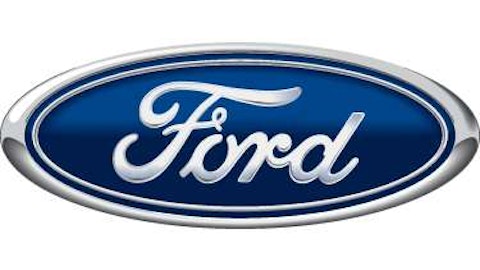Dividend stocks are useful for more than just income investors. This paper discusses how over longer timespans, dividend stocks out-perform non-dividend paying stocks. That makes perfect sense, since corporations love to spend money on outlandish corporate compensation, one or two extra corporate jets, and share buybacks that just happen to occur when the stock is trading at all-time highs. Dividends return some of earnings to shareholders, to help reduce the amount of unproductive spending and keep companies accountable.
Below, we’ll examine four dividend stocks with yields over 4% and market caps over $2 billion that can add a little to your portfolio.

PBI Total Return Price data by YCharts
A Company to Avoid
Pitney Bowes Inc. (NYSE:PBI) offers a strong yield, but this is the price the company is forced to pay to maintain investors’ interest in a declining industry.
Investing in Pitney Bowes is a high-roller version of hot potato. The company operates in the declining mail business. The advent of a little piece of technology called the Internet has forced a major decline of mail volumes. Customer communications management services and enterprise mail services are the company’s two biggest business segments.
Over the past 12 months, insiders have only purchased $60,000 worth of shares, which is hardly a strong vote of confidence for a company with a $2.4 billion market cap. Revenue has shrunk -3.88% over the past five years, and the company has a high total debt-to-equity ratio of 29.69. Its $3.3 billion of long term debt and $2.7 billion of current liabilities are latent risks.
Declining revenue and a super-high yield rate are not the signs of a dependable company — just a declining firm for traders to play with.
Firms to Invest in
ConocoPhillips (NYSE:COP) is a major oil company with a yield of 4.3%. Unlike Pitney Bowes, it has a total debt to equity ratio of only 0.45. Another sign of confidence is that its payout ratio is only 33%, and its ROI is 15.8%.
The company has recently undergone some major changes. In 2012, they spun off their midstream and downstream operations into a new firm, Phillips 66. In addition to selling off their downstream assets, ConocoPhillips has decided to sell a number of assets in politically risky areas like Nigeria and Algeria. They have also discussed selling off some portion of their Canadian assets. If only foreign bidders come to the table, then Canada’s political system may throw up roadblocks, as occurred with CNOOC and the Nexen sale.
ConocoPhillips is raising all of this cash to ensure that it hasa large enough capital investment budget to replace reserves and maintain production levels. It’s a large multinational with decades of experience, and its recent reorganization shows that it’s willing to do what is necessary to maintain production levels and keep the company focused.
CenturyLink, Inc. (NYSE:CTL) is a rural telecommunication company that is learning to deal with the switch to cell phones. It has tried to make the best of this situation, engaging in a number of acquisitions over the past couple years. It continues to grow its fiber network and expand its number of datacenters worldwide. The loss of revenue from its legacy operations is expected to continue for the time being, though revenue is expected to stabilize in 2014.
Currently, CenturyLink has a yield of 7.2% and $19.5 billion in long term debt. The firm’s total debt to equity ratio of 1.03, ROI of 1.6%, and ROA of 3.5% are not the most encouraging numbers. Regardless, the company is take proactive steps to develop their fiber network and offer new products which eventually will bring up their earnings and revenue. CenturyLink offers a high yield and yet it does not appear to be overly risky.
Altria Group, Inc. (NYSE:MO) sells “sin” goods like tobacco and alcohol. The company has a number of strong brands like Marlboro. In the first three quarters of 2012, Marlboro increased its market share by 0.5% relative to the same period in 2011.
Altria’s payout ratio of 92% is rather high. Its ROI of 20.8% and ROA of 10.5% are healthy, but its revenue has shrunk a total of -12.8% over the past five years, a concerning trend. Regardless, it offers a high yield of 5.2% and a strong position in the tobacco market.
Conclusion
Over longer time frames, dividend stocks can offer a much greater total return than non-dividend paying stocks. Dividends put cash in your pocket right now, and help to force the company to be responsible with its income. The latter three dividend stocks above are good ways to add a little bit of growth and cash flow to your portfolio.
The article 3 Dividend Buys and 1 You Need to Avoid originally appeared on Fool.com and is written by Joshua Bondy.
Copyright © 1995 – 2013 The Motley Fool, LLC. All rights reserved. The Motley Fool has a disclosure policy.




